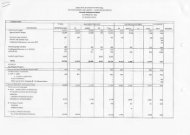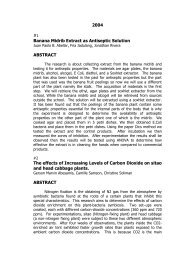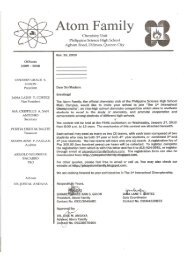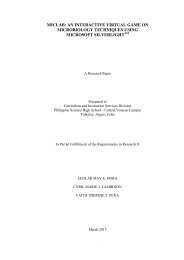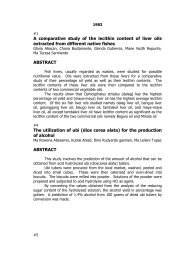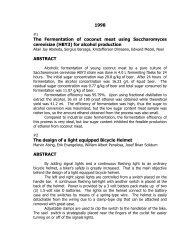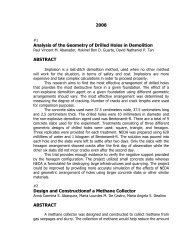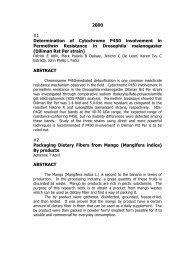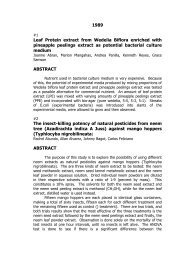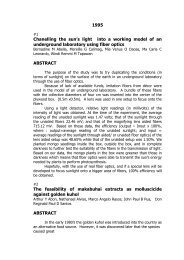(LATO) IN LOWERED SEAWATER pH - Central Visayas Campus ...
(LATO) IN LOWERED SEAWATER pH - Central Visayas Campus ...
(LATO) IN LOWERED SEAWATER pH - Central Visayas Campus ...
Create successful ePaper yourself
Turn your PDF publications into a flip-book with our unique Google optimized e-Paper software.
a reagent grade Hydrochloric acid of different volumes was added daily to each tank<br />
to obtain the following <strong>pH</strong> ranges: 2.7 to 3.3, 3.7 to 4.3 and 5.7 to 6.3. A GLX<br />
Explorer <strong>pH</strong> meter was used to monitor the specified <strong>pH</strong> ranges.<br />
Figure 1. Planting of C. lentillifera in the tank<br />
The <strong>pH</strong> ranges were checked again two (2) hours after adjustment to ensure<br />
that the <strong>pH</strong> was still within the desired ranges (Clark et al., 2009). A tank filled with<br />
20 L of seawater (<strong>pH</strong> 7.7 – 8.3) was also created which served as control. All of the<br />
tanks were placed strategically to expose it to sunlight.<br />
3.4 Growth Performance<br />
3.4.1 Measurement of the Species’ Growth Rate<br />
The growth performed by the species was determined by measuring its<br />
biomass using a digital weighing scale. The individual species’ weight was recorded<br />
before and after the treatment. The data on the average weight of the samples were<br />
plotted in a graph with the time on the x-axis and biomass on the y-axis. To determine<br />
the growth performance of the species, two points, N1 and N2, which are the<br />
extremes of the linear phase are taken and substituted into the equation below<br />
(Levasseur et al., 1993).<br />
14



